Abstract
Oregon is a cool wine-producing region where grapes characteristically contain high concentrations of organic acids. To reduce the natural acidity and increase the microbiological stability and flavor complexity of the wine, malolactic fermentation is encouraged. In this study, strains of Leuconostoc oenos indigenous to Oregon wines were evaluated for their suitability to conduct malolactic fermentation in Oregon wines. Tests determined the malolactic activity of the Oregon isolates in comparison with commercial strains ML-34, PSU-1, MLT-kli, and ens 44-40 under various temperature and pH conditions. Sensitivities to sulfur dioxide, ethanol, and fumaric acid also were determined. Two Oregon strains, Er-1a and Ey-2d, were selected for commercial winemaking tests because they had greater malolactic activity under conditions of low pH (3.0) and low temperature (15 and 8°C), respectively.
Full text
PDF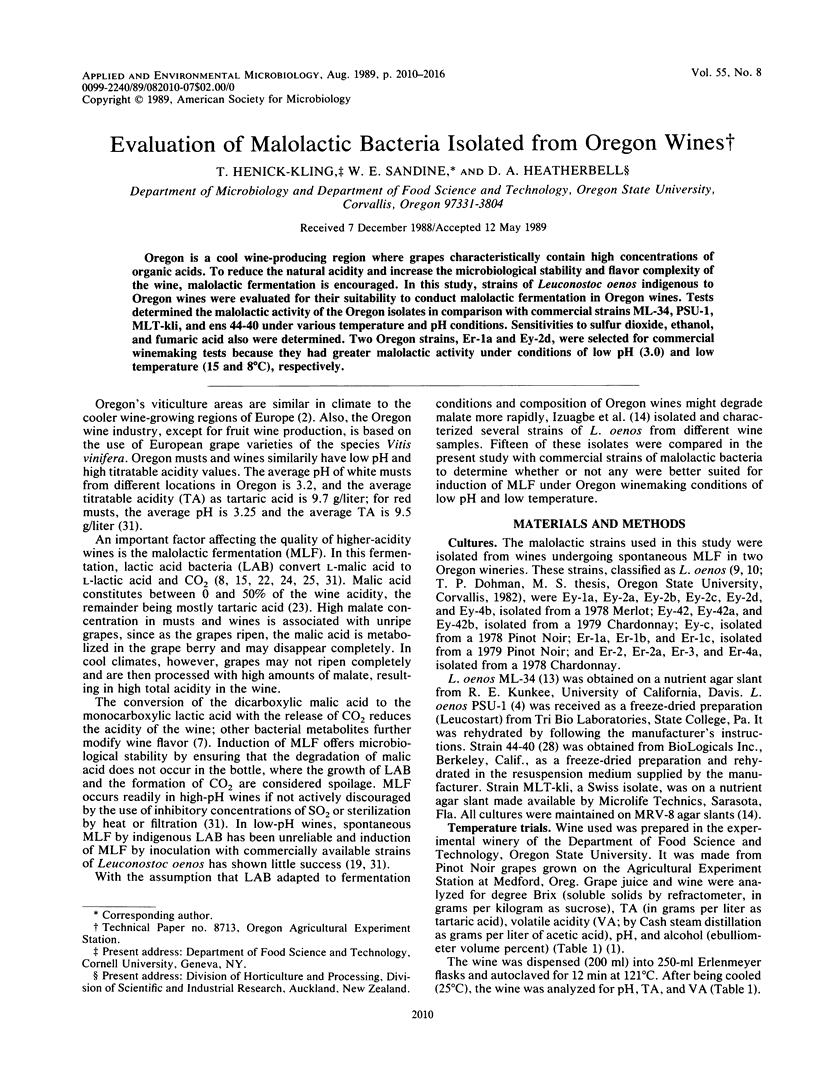
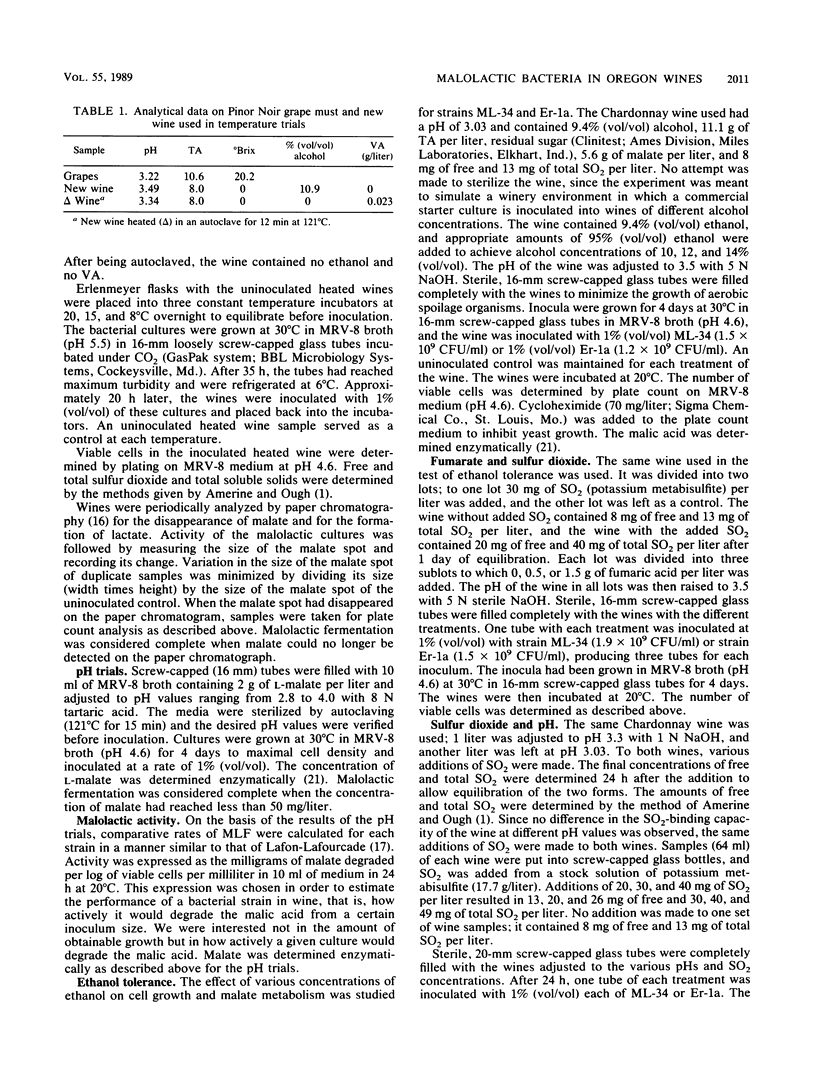
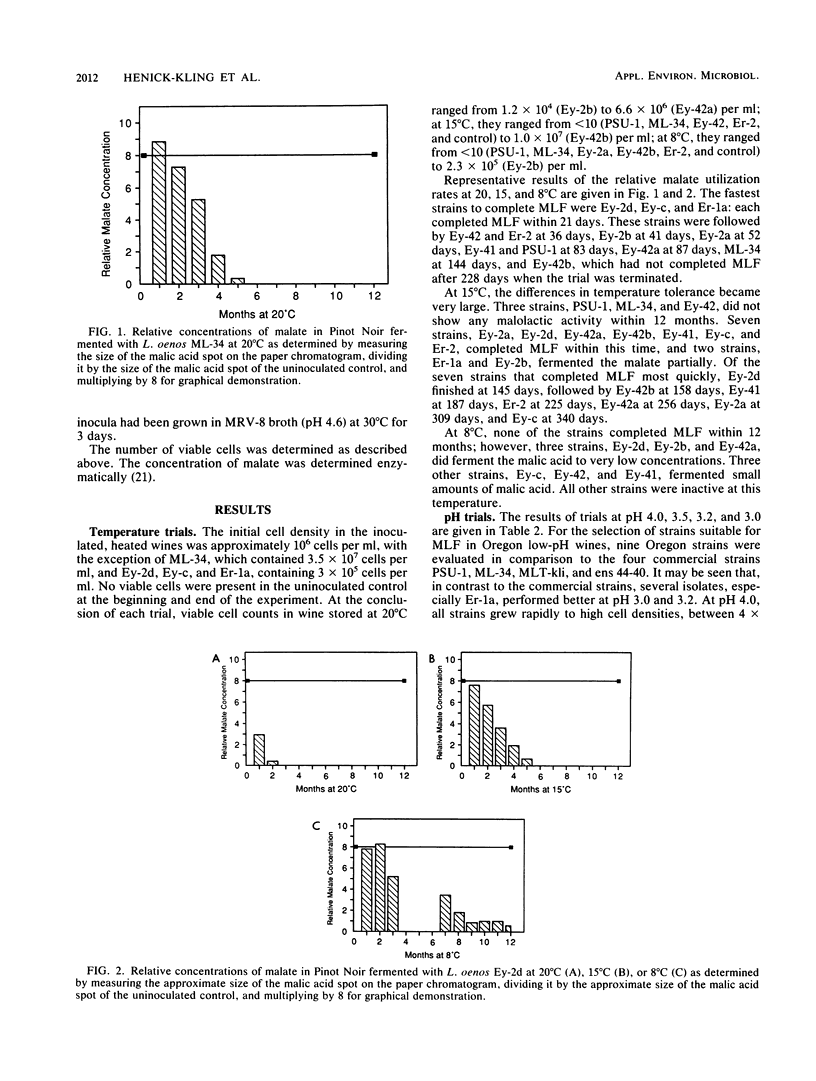
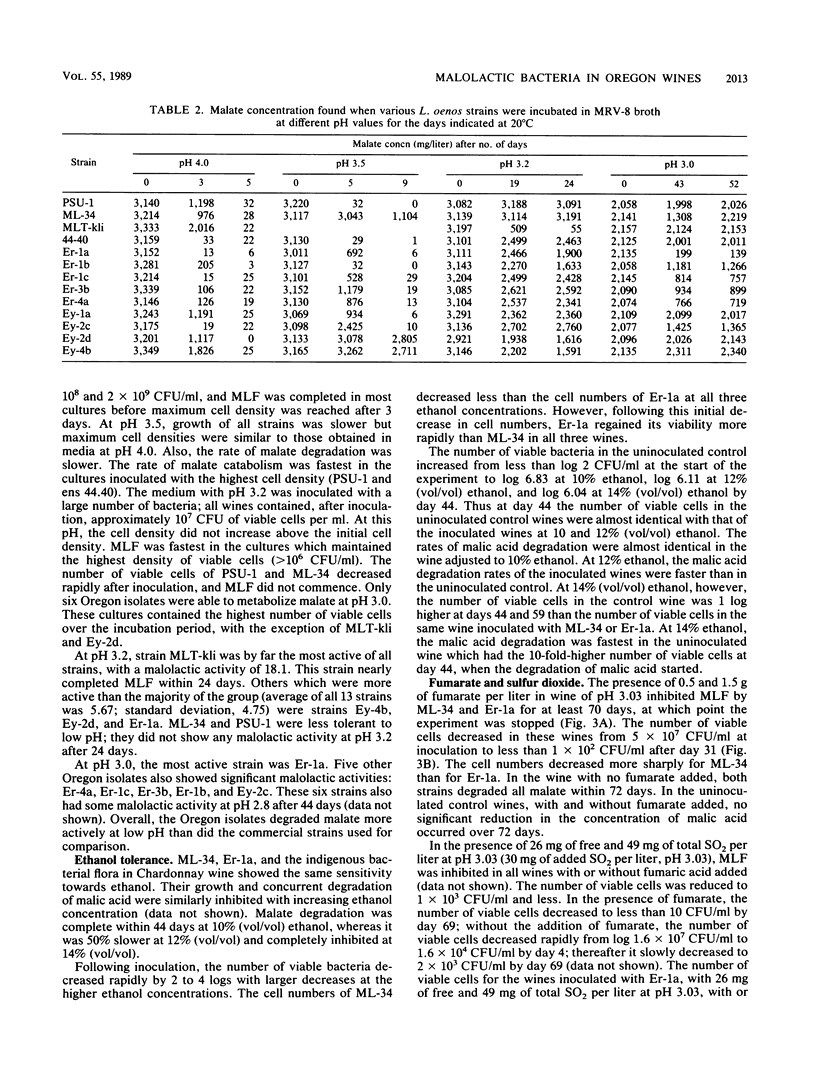
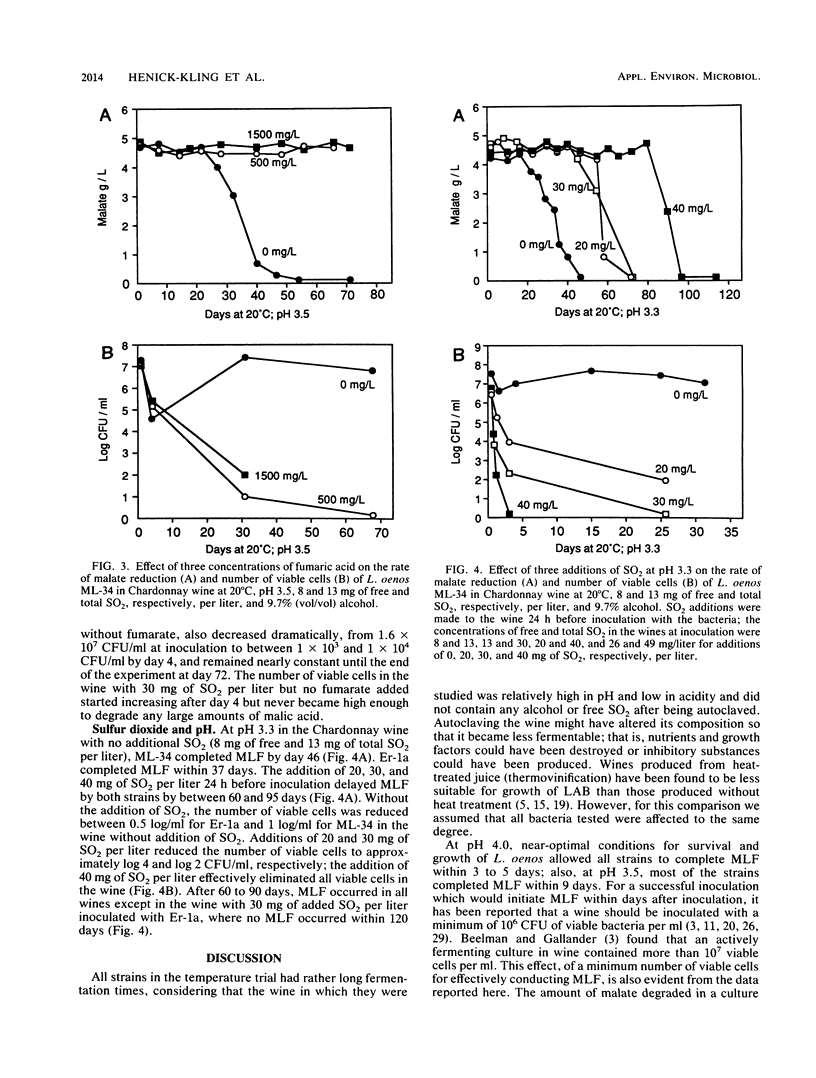
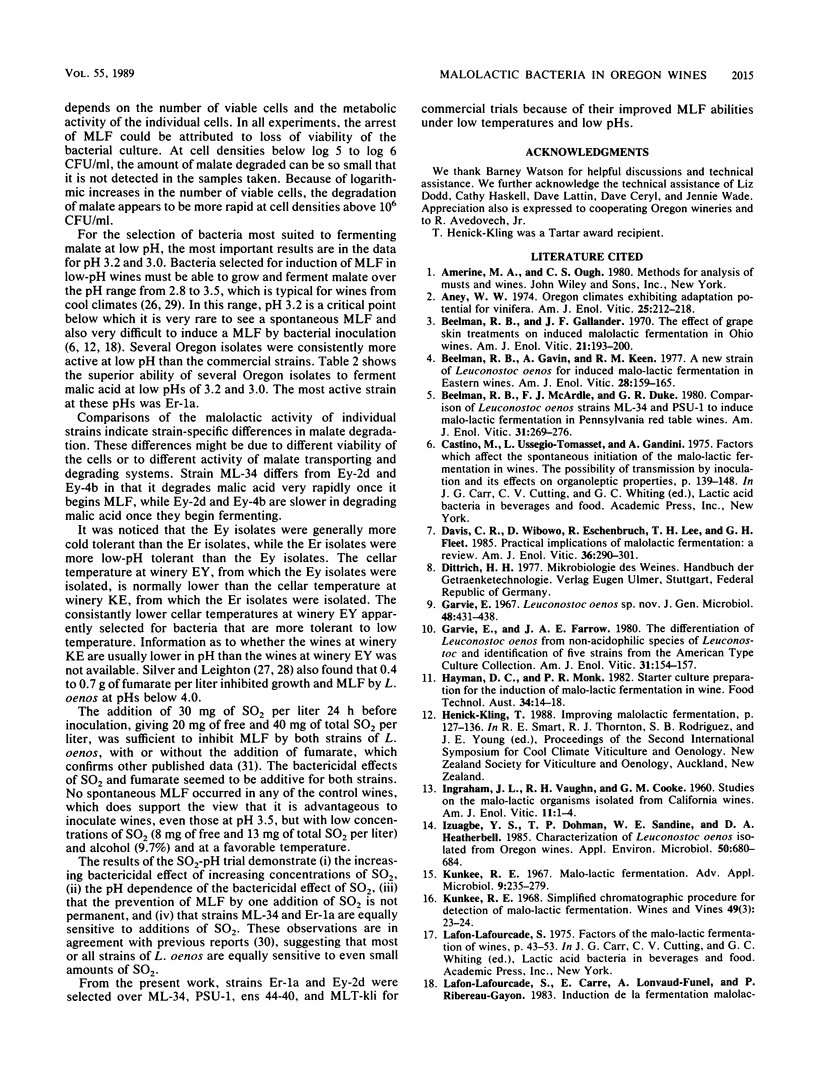
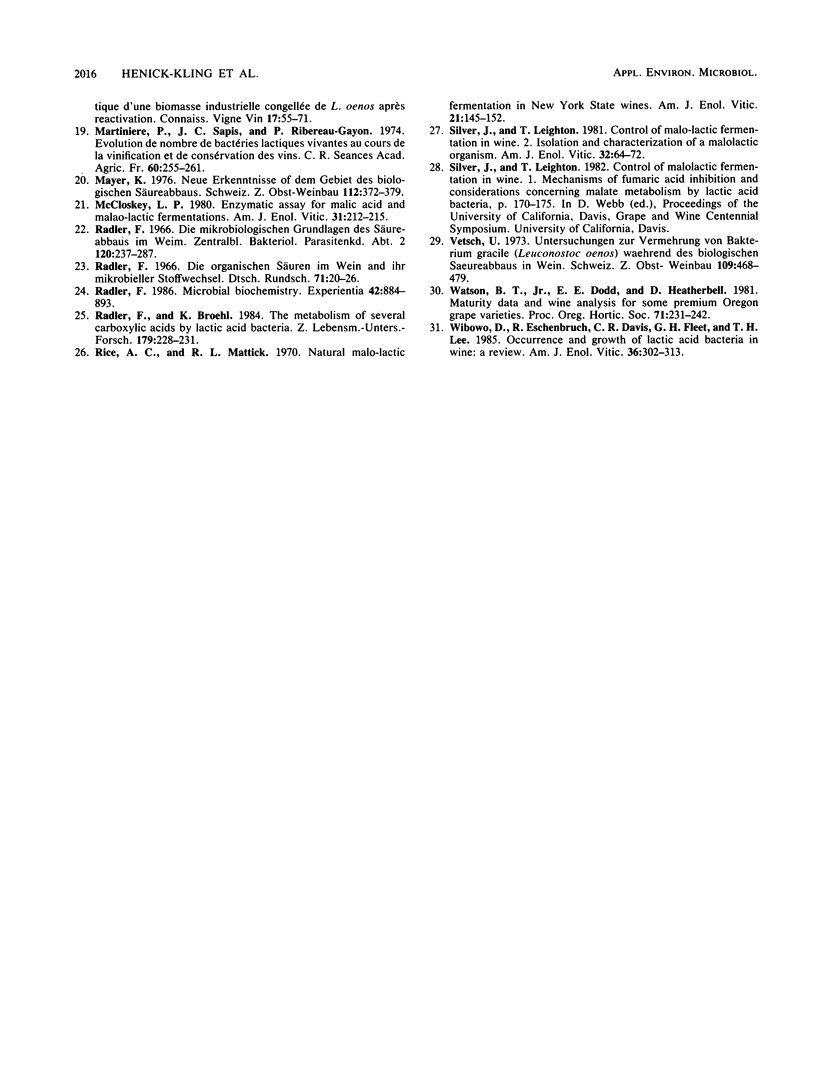
Selected References
These references are in PubMed. This may not be the complete list of references from this article.
- Garvie E. I. Leuconostoc oenos sp.nov. J Gen Microbiol. 1967 Sep;48(3):431–438. doi: 10.1099/00221287-48-3-431. [DOI] [PubMed] [Google Scholar]
- Izuagbe Y. S., Dohman T. P., Sandine W. E., Heatherbell D. A. Characterization of Leuconostoc oenos Isolated from Oregon Wines. Appl Environ Microbiol. 1985 Sep;50(3):680–684. doi: 10.1128/aem.50.3.680-684.1985. [DOI] [PMC free article] [PubMed] [Google Scholar]
- Kunkee R. E. Malo-lactic fermentation. Adv Appl Microbiol. 1967;9:235–279. doi: 10.1016/s0065-2164(08)70530-6. [DOI] [PubMed] [Google Scholar]
- Radler F., Bröhl K. The metabolism of several carboxylic acids by lactic acid bacteria. Z Lebensm Unters Forsch. 1984 Sep;179(3):228–231. doi: 10.1007/BF01041899. [DOI] [PubMed] [Google Scholar]
- Radler F. Die mikrobiologischen Grundlagen des Säureabbaus im Wein. Zentralbl Bakteriol Parasitenkd Infektionskr Hyg. 1966;120(3):237–287. [PubMed] [Google Scholar]


